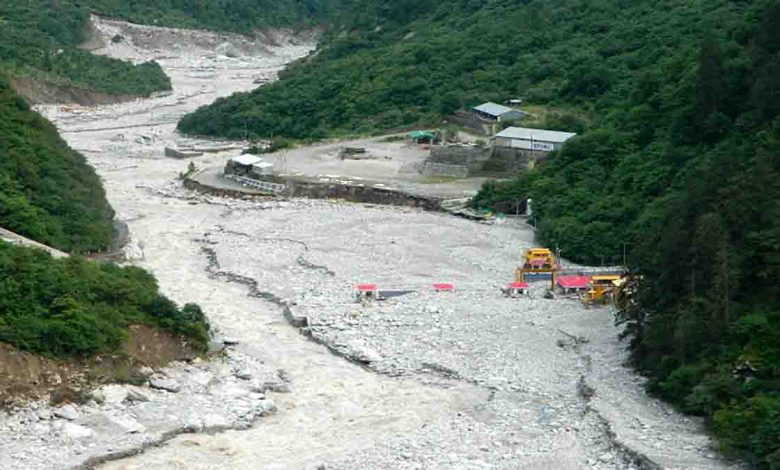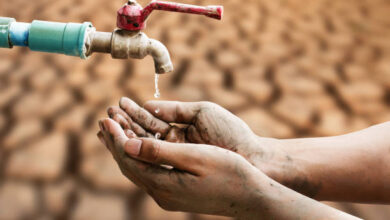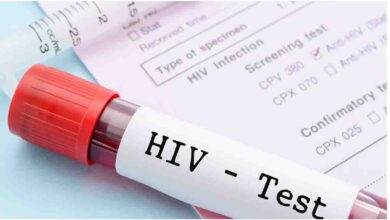Unstoppable building of hydel plants in hilly region invites disaster: Experts

The glacier burst which triggered Chamoli tragedy leading to the damage to the Rishiganga Project downstream was waiting to happen in the hydel plants dotted fragile mountainous region of Uttarakhand, environmentalists have said.
In fact, a 2019 study published in the journal Science Advances revealed that due to rising temperatures because of global warming, Himalayan glaciers are melting twice as fast since the start of the 21st century and have lot over a vertical foot and a half of ice each year.
“This melting of glaciers has created a potential threat of water supply for hundreds of millions of people in countries including India,” said the researchers in their analysis, spanning 40 years of satellite observations across India, China, Nepal and Bhutan.
While climate change make the region vulnerable to earthquake and cloudburst, the environmentalists feel that the Government’s unstoppable construction of hydel power plants and other activities like roads were adding to the environmental woes.
BJP leader Uma Bharti has also expressed concerns over the dam construction spree in the “ecologically sensitive” region around the Dhauli Ganga river’s upstream.
“I am downstream in Haridwar now. But even here, there is a flood alert. This shows how environmentally sensitive the upper reaches of the Ganga are,” said former Water Resources Minister in the Modi Government in a series of tweets after Sunday’s incident.
At least, 170 labourers at the dam construction site were reported missing following massive landslides and tunnel blockages in the ecologically-fragile Himalayan region which is already facing climate change challenges.
Swami Shivanand Saraswati, a 76-year-old founder of Haridwar’s Matri Sadan, an organisation working for the protection of environment told a news agency soon after the tragedy that they had been demanding a freeze on the construction activity around the Chamoli district since 2013. “However, the government has not listened to our concerns and continued with the construction of hydel-power projects. Now, this is the wrath of nature”,
He was referring to warnings around the construction activity on the Dhauliganga River, the site of Sunday’s dam breach in the wake of a glacial burst, in a government-appointed expert committee report in 2017.
Environmentalist Rajendra Singh minced no words as he said that the cloudburst was reflective of the government’s “flawed policy” towards the holy river.
“The environmentalists have been demanding a complete end to hydel power projects on the upper reaches of the river. This is just nature’s way of responding. I only hold the government responsible for this. The warning signs were there in the 2013 tragedy”, said Singh who is known as India’s “Waterman” for his water conservation efforts.
In 2018, Professor G.D. Agarwal, an environmental engineer-turned-sage, who succumbed to his 111-day hunger strike to protest the “increase in” construction activity on the Ganga River in Uttarakhand over the past few years, had accused the current government of being insensitive to “Maa Ganga” (Mother Ganges) and just cashing it for commercial gains, including selling hydel power and infrastructure development.
According to various reports, till 2018, there were as many as 42 hydel power plants operational and 203 more in various stages of approval, planning and development, though lately the Centre had been scrapping a few of them following outcry from locals and green activists.
For instance, the Standing Committee of the National Board of Wildlife (NBWL) dropped NTPC’s two hydro-power projects — 520 MW (4×130) Tapovan Vishnugad dam and 171 MW Lata Tapovan dam — proposed on the Ganga river, citing gazette notification issued last October that barred projects that obstruct minimum ecological flow (e-flow) in the river.
In fact, Dr. D K Hari and Dr. D K Hema Hari, in their blogpost Bharath Gyan way back in 2018 rued how a string of hydel power projects were like tomb bombs ticking in the region.
“As we go up along the rivers in the fragile region, to the upper reaches of the Himalaya, we see a plethora of Hydel power projects being built on the main river itself at close proximity,” they said as they cited a central report in 2017 which had advised the Centre to stop all the hydel dam construction activity on the upper reaches of the river.
However, it’s not only the NGOs and activists who have been warning the Government about the threats from the spree of construction being undertaken in the Himalayas.
Earth scientists from Indian Institute of Technology (IIT), Roorkee in 2019 in a research published in Current Science raised a red flag over the Modi Government’s Rs 12,000- crore pet project Char Dham Mahamarg Vikas Pari Yojana that aims to connect the four pilgrimage in the fragile mountainous eco-system region. Scientists T Siddique and SP Pradhan had warned that inadequately performed excavation without proper consideration of eco sensitive terrain may lead to catastrophic events as witnessed during the Kedarnath disaster in 2013.
The scientists said that the 900-kilometer long all-weather road project which envisages widening of National Highway-58, is being executed in complete violation of environmental norms with several irregularities like adoption of unscientific methods, inappropriate dumping of tonnes of mud and debris, excavation at steep angles among others.
The project is already drawing flak from environmentalists, NGOs like Citizen for Green Doon, and locals who too have alleged serious violation of green norms as well as rampant cutting of hills making the area prone to landslides.
Earth scientist Pradeep Srivastava, from Dehradun-based Wadia Institute of Himalayan Geology in the report called the project “unsustainable”. “Such projects won’t work in these mountains because the roads are built on “fragile rocks” and “subsided landslides,” he said.
In January last year, Central Water Commission in its report had pointed out that 4 of the 11 hydropower projects on the upper reaches of the river Ganga’s tributaries are flouting norms to release minimum quantities of water through the year The non-compliant ones were Maneri Bhali Phase 2 , Vishnuprayag Hydroelectric project, Srinagar Hydroelectric project and the Pashulok barrage project, said the CWC.
Monday, 08 February 2021 | Archana Jyoti | New Delhi






